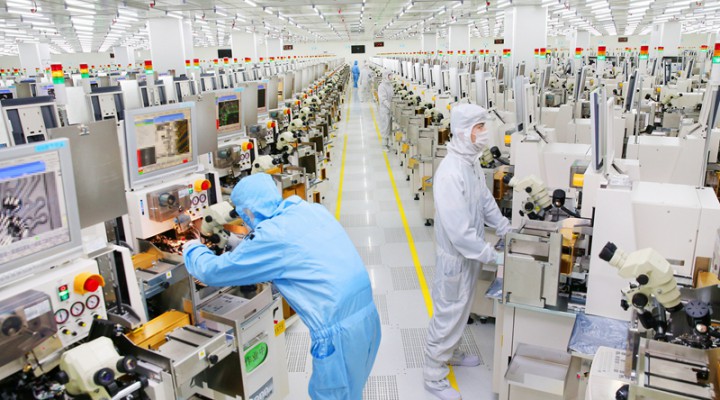GG or Geek Geopolitics

A crucial cluster in modern technologies is the production of semiconductors. Decades of progress in the mass production of chips containing ever-higher numbers of circuits has radically altered the economics of computing and fundamentally reshaped the global economy. The personal computer revolution of the 1980s, the internet revolution of the 1990s, and the smartphone and social media revolutions of the early 2000s were all built on silicon.
The next generation of potentially game-changing consumer and industrial applications built on top of 5G networks will also depend on improvements in the performance and computing power supplied by cutting-edge chips. Access to cutting-edge semiconductors is also critical to the balance of global military power due to their use in high-performance computing and AI and internet of things (IoT) applications, and also the crucial role they play in modern and next-generation weapons platforms.
At present, only two companies – South Korea’s Samsung and Taiwan’s TSMC – manufacture semiconductors on an industrial scale at the most advanced process nodes. These industry leaders are currently producing in commercial quantities at the 7-nanometre (nm) node, while striving to move to 5 nm, and then, finally, to 3 nm by the mid-2020s. For comparison, the US integrated chip manufacturer Intel is also eager to produce in volume at 7 nm, but the company ran into difficulties in achieving this goal, announcing in July 2020 that production of its next-generation chips would be delayed until 2022.
At present, 7 nm chips – including Huawei’s Kirin 990 system-on-chip manufactured by TSMC in Taiwan – are the most advanced semiconductors in commercial use. Huawei’s chip design arm HiSilicon had been working with TSMC on the latest in the Kirin series at the 5-nm processing node.
Despite the growing prowess of Chinese technology firms in areas such as 5G, artificial intelligence, mobile applications and quantum computing, Beijing is still lagging far behind the world’s cutting-edge semiconductor manufacturing technologies. Consequently, in order to meet its ambitious targets and remain competitive on the global market, Chinese technology companies are relying on overseas fabs to create their most advanced chips.
China is stepping up its efforts to master advanced semiconductor manufacturing technologies. Through its huge National Integrated Circuit Investment Fund, created in 2014 and recapitalised in 2019, and also other regional and local funds, it has allocated funding in excess of $200 billion – more than the inflation-adjusted cost of America’s Cold War-era Apollo moon flight. However, China has so far achieved limited results. China’s leading manufacturer of semiconductors, Semiconductor Manufacturing International Corporation (SMIC), is still 3–5 years behind industry leaders Intel, Samsung and TSMC. In August, SMIC announced that it would be able to push its existing lithographic equipment to 7 nm. While this would be a major breakthrough for the company, it would still leave it behind industry leaders.
As for Intel, Samsung and TSMC, they have already been forced to look for new ways of working together and sharing costs to keep up with the current pace of cutting-edge innovation. The combined R&D costs and capital expenditures of US semiconductor companies rose from $40 billion in 2007 to $72 billion in 2019, which reflects the rising cost of complying with Moore’s Law. In 2018, another major player, GlobalFoundries – owned by UAE sovereign wealth fund Mubadala – effectively dropped out of the race for global leadership after announcing that it was going to abandon development efforts at the 7-nm node, primarily due to prohibitive tooling costs.
https://orientalreview.org/2021/05/21/gg-or-geek-geopolitics/
 TheAltWorld
TheAltWorld 
0 thoughts on “GG or Geek Geopolitics”